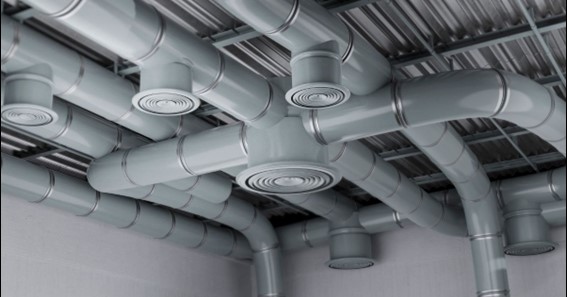Unplasticized polyvinyl chloride (uPVC) pipes are widely used in plumbing, drainage, and sewage systems due to their durability, low cost, and resistance to chemicals and corrosion. These pipes come in various sizes to suit different applications, and understanding the standard uPVC pipe sizes can help in selecting the right size for your needs. In this blog, we will take a closer look at the standard uPVC pipe sizes.
What Is The Standard uPVC Pipe Sizes?
uPVC Pipe Diameter
The diameter of a uPVC pipe is an important factor in determining its capacity to carry fluids. The standard diameters of uPVC pipes are:
- 20 mm (3/4 inch)
- 25 mm (1 inch)
- 32 mm (1 1/4 inch)
- 40 mm (1 1/2 inch)
- 50 mm (2 inches)
- 63 mm (2 1/2 inch)
- 75 mm (3 inches)
- 90 mm (3 1/2 inch)
- 110 mm (4 inches)
- 160 mm (6 inches)
These sizes are commonly used in residential and commercial plumbing systems, with larger sizes typically used in industrial applications.
uPVC Pipe Length
uPVC pipes are typically manufactured in lengths of 3 meters or 6 meters, although longer lengths can be custom ordered. The choice of pipe length depends on the application and the distance between the connection points.
uPVC Pipe Class
The class of a uPVC pipe refers to its pressure rating and thickness, with higher class numbers indicating a thicker wall and higher pressure rating. The standard classes for uPVC pipes are:
- Class 4 – 4 kgf/cm2
- Class 5 – 5 kgf/cm2
- Class 6 – 6 kgf/cm2
- Class 8 – 8 kgf/cm2
- Class 10 – 10 kgf/cm2
The class of the pipe determines its suitability for different applications, with higher-class pipes used in high-pressure systems.
Get Knowledge About Different Topics On Sizesworld
FAQ
What Size Is The uPVC Drainage Pipe?
The lightweight pipes and fittings are available in diameters from 32mm to 315 mm. OMANpLAST™ uPVC Drainage & Sewer pipes are suitable for underground gravity sewer application and are available from 110 mm to 400 mm diameter reliability and proven service performance: • complete plastic system.
What Is The Astm Standard For uPVC Pipe?
uPVC pipes and fittings are easy and economical for the distribution of water. These pipes are fabricated according to the ASTM D 1785 standard and accessible in two variants – SCH 40 and SCH 80. These pipes are used in plumbing, water supply, and lowering jet pumps in bore wells.
What Is The Difference Between uPVC Schedule 40 And 80?
Schedule 40 PVC is usually white in color and has thinner walls, thus can handle less pressure than its counterpart. Schedule 40 PVC pipe works best for low water pressure applications. By contrast, Schedule 80 PVC is usually gray in color and has thicker walls; therefore, it can handle higher water pressures.
What Is The Size Of The Cpvc uPVC Pipe?
The CPVC plumbing pipes are available in sizes from 15mm (1/2″) to 50mm (2″) conforming to IS 15778 in SDR 11 & 13.5 classes. CPVC pipes are also available in ‘Iron Pipe Size’ (IPS) from 65mm (2 1/2″) to 150mm (6″) in Schedule 40 and Schedule 80 series which meet the requirements of ASTM F 441.
Conclusion
In summary, uPVC pipes are widely used in plumbing, drainage, and sewage systems due to their durability, low cost, and resistance to chemicals and corrosion. These pipes come in a variety of standard sizes, with the diameter, length, and class of the pipe determining its capacity to carry fluids, suitability for different applications, and pressure rating. Understanding the standard uPVC pipe sizes can help in selecting the right size for your needs and ensure the efficient and reliable operation of your plumbing system.
All Your Queries Regarding The Standard uPVC Pipe Sizes Must Have Been Answered Here Above.
uPVC Pipes Specifications Pdf
uPVC Pipe Catalogue
uPVC Pipe Class Specification
uPVC Pipe Class D Specification
uPVC Pipe Class B Specification
uPVC Pipe Sizes In Inches
Pvc Pipe Class 4 Specification
Standard uPVC Pipe Sizes
What are the different types of uPVC pipes?

17 thoughts on “What Is The Standard uPVC Pipe Sizes?”
Comments are closed.